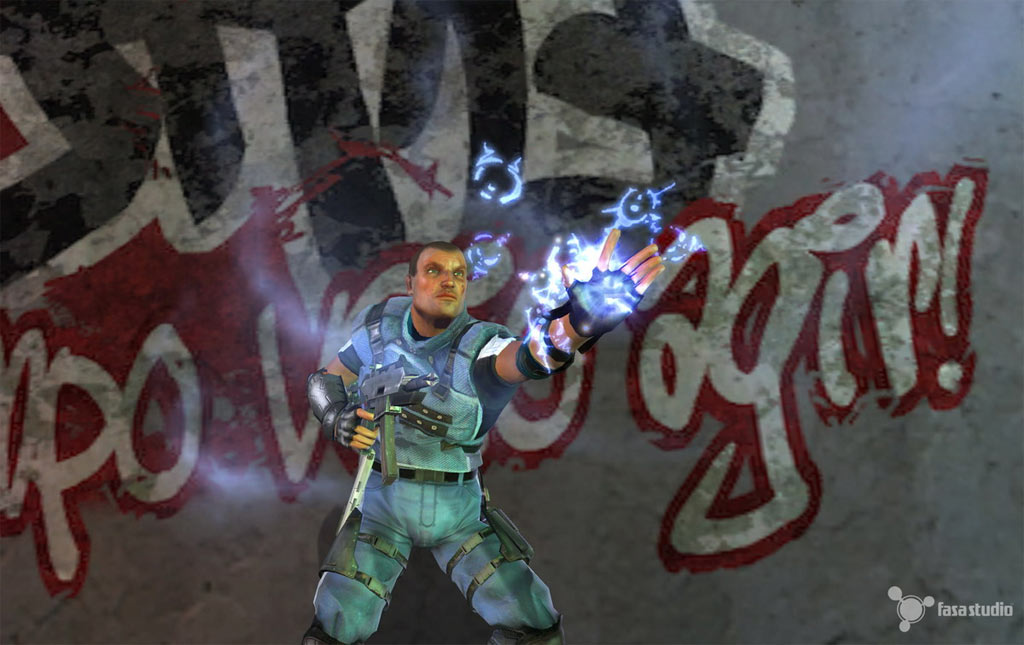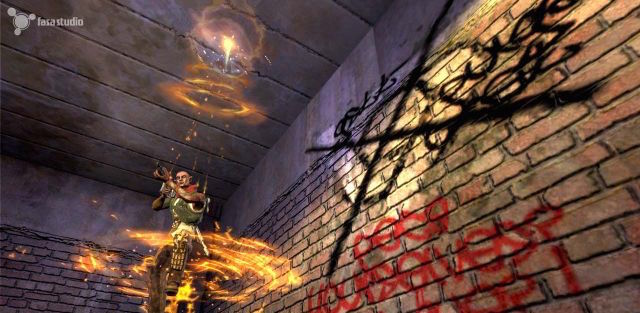Developing for next-generation gaming platforms does not happen overnight. It takes months, even years, of planning and often involves a certain degree of speculation when it comes to what the technology will allow you to do. Microsoft Game Studios’ (MGS) FASA Studio began production on Shadowrun over two before the technology to produce such a game was available.

Shadowrun is the first title to be developed for Microsoft Vista and Xbox 360 that allows live, cross-platform multi-player gaming. When production began, it was still unclear what audio capabilities the hardware would allow. According to Tobin Buttram, Audio Director on Shadowrun, “When we first started development, the audio picture for Xbox 360 existed mostly on paper. We knew, in principle, what the architecture would be, but that’s quite different from having working knowledge of the actual, finished product.”
“The top feature in Wwise is the working environment. It’s stable and intuitive and really helps me work.”
—Tobin Buttram, Audio Director, FASA Studio, Microsoft
In the early stages of development, Buttram worked with an in-house sound engine that allowed him to test basic placeholder assets, but, when it came time to create next-generation audio for the highly anticipated Shadowrun, the development team considered all of its options. After careful testing, FASA Studio selected Audiokinetic’s Wwise®-WaveWorks Interactive Sound Engine® as its audio pipeline solution.
Selecting the Right Middleware Solution
Clearly, one of the main advantages associated with choosing any middleware solution, rather than maintaining in-house software, is that someone else is responsible for keeping ahead of industry trends. This means that, while FASA Studio concentrates on creating a game for next-generation platforms, Audiokinetic is concentrating on allowing them to create the best possible audio.
According to Buttram, who has shipped titles with Microsoft’s XACT in the past, “Although the feature set and the ideas behind it were great, it sometimes came up short on getting those features into the hands of content creators. And we knew that, when the team went to version 2 of XACT for Xbox 360, their priorities would have to be the hardware and software architecture of the console itself instead of the authoring tools.”
In the end, Buttram selected Wwise because it was the right choice for his production. He explains that “the feature set in Wwise and the product’s road map were the best match for our needs on Shadowrun.”
According to Buttram, “The top feature in Wwise is the working environment. Quickly shifting between different views using quick keys allows me to focus on the task at hand rather than on constantly rearranging the UI. It’s stable and intuitive and really helps me work.” He goes further to emphasize that “the ability to shift various audio states from one to another, to cross-fade between them, and to control the amount of time over which that happens is great. The real-time monitoring, or advanced profiler functionality, is proving itself to be indispensable to me and to our test team here at FASA.”
Audio Tools for Audio Artists
Not surprisingly, the nature of the authoring environment in Wwise is extremely important to Buttram. Having been Audio Director at FASA Studios for the past four years, he began his career as a musician. He has a BA in Music Performance from the University of Central Florida and spent years touring and recording with an impressive list of artists.
Buttram has been working in games audio for ten years and, like so many other creators of audio for games, has been frustrated with the tools available to him. As Buttram explains, “Traditionally, audio tools are designed by programmers and reflect a programmer mentality instead of an audio engineering approach. Understandably, given the tight deadlines in this industry, tool development takes a back seat to engine development, so all too often the tools look and feel like glorified spread-sheets.”
What this musician and composer turned audio director wanted was a production environment that was more responsive to his production needs and was more in line with his way of working. For Buttram, what sets Wwise apart is that “Audiokinetic used a more audio-centric design paradigm when it came time to create their solution.”
“Compared to the others, Wwise is easy and makes intuitive sense. The architecture and interface are great for anyone working on audio production in games.”
—Tobin Buttram, Audio Director, FASA Studio, Microsoft
Says Buttram, “The biggest thing is that Wwise is the first mature authoring environment in the industry. Compared to the others, Wwise is easy and makes intuitive sense. The architecture and interface are great for anyone working on audio production in games.”

More Creative Control
Buttram admits that the audio group at FASA Studio is not huge. Peter Burzynski, who is the sole audio developer at FASA, is also responsible for many other critical systems in the game that often have to take precedence. As Audio Director, Buttram has access to audio production services at Microsoft Game Studios for help on content production, but, on most days, he is the entire audio team. Says Buttram, “This is one of the reasons why we are using Wwise.”
According to Buttram, Wwise makes his work a lot easier. “Using Wwise and our proprietary game engine, it’s easy to hook elements up. Then, I can test and change most parameters myself live in-game. I can even update 3D roll offs in-game and in real-time. This kind of live, in-game mixing should be a requirement for any games audio tool.”
“The biggest thing is that Wwise is the first mature authoring environment in the industry.”
—Tobin Buttram, Audio Director, FASA Studio, Microsoft
Because Buttram can design and tweak on his own, he does not have to run to a programmer to make changes. As Buttram says, “Wwise really puts more control in the content creator’s hands.” Using Wwise means that Buttram can create sophisticated audio with relative autonomy instead of waiting to fit into Burzynski’s already over-full schedule.
Of course, Buttram is used to this kind of solitary work. He says, “In audio development, you do a lot of work by yourself. And, much of the time, you are doing work that no one notices until they’re playing the game on a good surround sound system.” Then again, Buttram is not really alone anymore. Audiokinetic appreciates what he is doing and is only too happy to help.

Comments